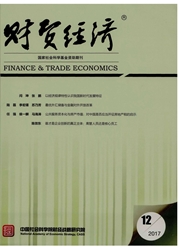

 中文摘要:
中文摘要:
城镇化与农业现代化协调发展是缩小我国城乡二元结构差距的重要举措。本文阐释了流通业在“两化”发展中门槛效应的理论框架,提出研究假说,并运用门槛模型对中国2000—2013年省际面板数据进行实证分析,考察流通业在城镇化促进农业现代化发展中的门槛效应特征。结果表明,流通业发展水平显著影响城镇在区域经济中集聚的稳定性,反映流通业发展水平的各变量在城镇化促进农业现代化中均呈现明显的门槛效应特征。当流通业发展水平未达到门槛条件时,城镇化对农业现代化的促进作用不显著;当流通业发展水平达到门槛条件后,城镇化会对农业现代化产生显著的促进作用。
 英文摘要:
英文摘要:
This paper explores the theoretical framework of the threshold effect of circulation industry in promoting the development of urbanization and agricultural modernization, puts forward research hypothesis and conducts empirical analysis by the threshold model with China's provincial panel data from 2000 to 2013. The results find that the development level of circulation industry can significantly influence the stability of urban agglomeration in regional economy which indicates that circulation industry exerts significant threshold effect on the development of agricultural modernization promoted by urbanization. When the development level of circulation industry has not reached the threshold, the promotion effect of urbanization on agricultural modernization is not significant; while the level reaches the threshold, the effect will be significant.
 同期刊论文项目
同期刊论文项目
 同项目期刊论文
同项目期刊论文
 期刊信息
期刊信息
